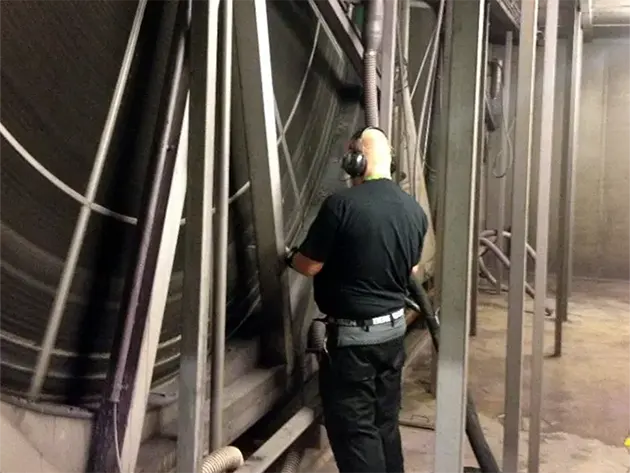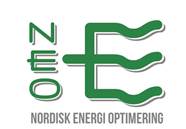Rotating exchangers & Cooling/heating exchangers
- Home
- /
- Areas of application
- /
- Common problem areas
- /
- Rotating exchangers & Cooling/heating exchangers

Rotating exchangers & Cooling/heating exchangers
Rotary gearbox, cooling/heating exchangers
In principle, all different types of inverters in a ventilation system have the same task, converting energy from one medium to another. It can be air/air or air/liquid ,liquid/air and liquid/liquid. The principle is the same but the design is different.
Rotating heat exchanger
A rotary converter is a type of component used in ventilation systems to convert energy from one medium (e.g. air) to another (e.g. water). This conversion of energy is possible thanks to the unique design of the inverter, which consists of two movably connected sections that rotate relative to each other. As the air passes through the first section of the exchanger, its thermal energy is transferred to the second section, where the water passes. This allows the ventilation system to use the thermal energy of the air to heat the water used in the system.
The rotation of the two sections is carried out by means of a motor mounted on the gearbox. This ensures that the heat transfer between air and water takes place evenly and efficiently, so that as much thermal energy as possible can be used. The rotation can also be regulated to ensure that the gearbox works optimally for different conditions and requirements.
A rotary inverter is an important part of a ventilation system, as it helps to ensure that the system operates optimally from an energy perspective.
cooling/heating exchanger
A type of heat exchanger is a component of a system that is designed to transfer energy from one medium to another. This is done by the medium passing through the heat exchanger being heated or cooled by the other medium also passing through the exchanger. In this way, the inverter can be used, for example, to heat indoor air in winter or cool it in summer, without affecting the purity or humidity of the air. The converter is thus an important component of a system that helps to transfer energy between different media.
Dirty heat exchanger
A common problem with dirt in gearboxes is that the medium that will pass through the gearbox contains contaminants that can damage the gearbox components. This can lead to the inverter becoming less efficient and the energy transfer to the other medium not being as effective as it should be if it was clean. It can also cause the inverter to stop working altogether, which can be a major problem if not detected and corrected in time. To avoid these problems, it is important that the inverter is regularly cleaned and maintained.
It is common for gearboxes to become clogged due to dust, dirt, cooking grease, oils, industrial grease, lime, deposits, zinc deposits, leaves, feathers, hair, clothing dust, soot, welding fumes, etc.
Save money with the help of cleaning
Very often, as a property owner, you are told that you have to replace the heater because it is too old. This does NOT need to be done. It’s enough that we clean them and maintain a consistent level of service over time. Industries should review cleaning once/year, while commercial properties should review every two to four years.
By keeping the batteries clean, the heater gets its cooling/heating delivered to the fullest. Air flows become smoother, efficiency increases significantly, motors become more stable and smoother, squeaking and noise is eliminated for rotating gearboxes.
Shovels and motors are cleaned and balanced. The spaces inside the battery pack are cleaned of dirt and cleaned. Filters are replaced by us with new ones. The channels are cleaned to prevent the dirt inside from re-entering the newly renovated battery pack.
We comb the slats that are down as best we can and check for damage and any leaks to report this to the person in charge on site.
Cleaning with water
Cleaning with water and chemicals is an absolute NO. Aluminium hates water and chemicals, this dissolves the aluminium which starts to disintegrate. The dirt you get off is ONLY on the surface. The dirt flows into the battery and settles as a lump inside the battery shaft.
If you clean restaurant batteries that are full of cooking grease with water and chemicals, you have the whole place in a wet mess that becomes ice-haled when wet and when the grease dries it becomes like glue and bitumen and will stick right over everything, floors, walls, appliances, staff and their clothes and shoes that will drag the grease all over everything.
NEO METHODS AND CLEANING OF CHANGERS
Nordic Energy Optimization uses its proprietary and innovative method, the NEO method, which is a combination of dry ice and special equipment for effective cleaning. The Neo method involves using liquid carbonic acid ice to push dirt, impurities and other substances off the surface of the gears. This is an effective method for removing even the most stubborn contaminants.
One of the main advantages of the NEO method is that it is a gentle method that does not damage the surface of the gears. This is a method that does not damage the material, which is important to preserve its life and efficiency.
In addition, the NEO method is a quick and easy method to use. It is also very environmentally friendly as carbon dioxide is a naturally occurring gas and does not release any harmful substances into the air.
In conclusion, the NEO method is the best way to clean gearboxes because it is effective, gentle and environmentally friendly.



